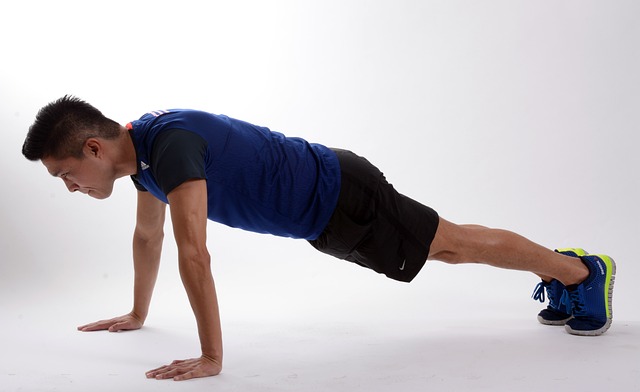Throwing a few rapid jabs at a punching bag may not seem difficult, but if you’ve never worked out with a heavy bag, you’re in for a struggle. The majority of large punching bags range in weight from 50 to 150 pounds. As a result, every time you lay into the bag, your fist, foot, or knee encounters tremendous resistance.
The initial (and perhaps unexpected) impact can be jarring, and you won’t be able to get away with throwing mild punches for long. To control your movements when you hit the bag, you must use your entire body, including your core, shoulders, and hips.
Of course, any workout that requires this level of total-body involvement can help you burn calories, build major muscle groups, and increase bone density.
More importantly, boxing against a heavy bag or a real person is one of the aerobic activities that provide the upper body, bone-building, and repetitive impact.
This interval workout was created by Reggie Chambers, a certified personal trainer and boxing and kickboxing coach.
Punching Bag Exercise How-To
To finish the workout, perform each exercise at the prescribed time intervals. Rest for a minute after completing all of the exercises, then repeat the series for a total of 20 minutes. Twenty minutes may not sound like much, but this challenge will almost certainly cause you to break a sweat.

Warm Up Before beginning a high-intensity activity like boxing, spend at least 5 to 10 minutes warming up. An active and successful warm-up should include activities that resemble the motions you’ll do during your primary workout.
Perform the following moves for 30 seconds each, three to four times through the series:
- Jog around the block
- Jacks of all trades
- Squats in the air
- Shadowboxing: Punch light punches into the air, alternating arms and lightly bouncing from foot to foot like a boxer.
- From the high plank to the downward dog: Begin in a high plank or push-up posture, then raise your hips up toward the ceiling while extending your shoulders and reaching your heels toward the ground to form a downward dog; return to a high plank position and alternate between the two.
Squat, Jab, and Cross
Work time: 45 seconds, rest time: 15 seconds
- In a boxing stance, face the punching bag. Your feet should be shoulder-width apart and staggered. Get the toes of your front foot to line with the heel of your rear foot, and both feet’ toes should be facing at a 45-degree angle to the punching bag.
- Raise your hands and position them as if you’re about to hit someone, keeping in mind that one of them should always be next to the side of your face for protection. Before executing a squat, throw two punches in fast succession, first jabbing with your left arm and then crossing with your right.
- Return to standing and repeat the jab-cross-squat pattern for the full 45 seconds.
When the 45 seconds are finished, take a 15-second break before moving on to the next exercise.
Cross Punches (Dominant Side)
Work time: 45 seconds, rest time: 15 seconds
- Cross punches, according to Chambers, are intended to attack the shoulders and arms. If you believe 45 seconds is easy, he recommends putting your full energy into each cross punch while keeping your abs tight and your face protected with your non-working hand.
- Stand with your left foot in front and your weight predominantly on your back foot, shifting your center of gravity slightly away from the bag. Set up in reverse if you’re left-handed.
- Shift your weight forward as you punch across your body with your dominant arm, using the force of your weight to rocket your fist to the bag. Make sure your hand returns to its original posture in front of your face after the punch instead of swinging downward. You should instantly return to your starting position to prepare for another powerful cross.
Continue utilizing your dominant arm for the entire 45 seconds. Take a 15-second break before moving on to the next exercise.
Cross Punches (Non-Dominant Side)
Work time: 45 seconds, rest time: 15 seconds
- Repeat the previous exercise, but this time focus on your non-dominant side. If you’re right-handed and just finished a set of cross punches with your right arm, switch to your left arm, assuming a boxing stance with your right foot in front, your left foot back, and your weight largely on the back foot.
- Similarly, if you’re left-handed and just finished a set of cross punches with your left arm, switch to your right arm. Stand with your left foot front, right foot back, and weight largely on your back foot.
45 seconds of forceful cross punches are required. Take a 15-second break before moving on to your next movement.

Punch with Side Kick Combos
Work time: 90 seconds, rest time: 30 seconds
Set a timer for 90 seconds and perform as many rounds of this four-move series as you can:
- 10 right sidekick reps, 30 straight punches
- 10 left sidekick reps, 30 straight punches
To begin, Chambers recommends standing about a leg’s length away from the punching bag, with your right side facing the bag. Put your right leg back and your arms up, with your left arm defending your face and your right hand in front of your face. Shift your weight to your left foot by swiveling your hips before pivoting, and lift your right leg with your knee bent from the ground.
Strike your right foot out with force as you extend your knee and hip, striking the bag using the heel of your right foot. Make sure your right foot should be flexed, and your heel should be protruding so that it makes first contact with the sack. Recoil your foot and knee as soon as possible, bringing your right foot back to the starting position.
After you’ve completed 10 kicks on the right side, use your right arm to deliver 30 straight punches to the bag. Rotate your position so that your left side is facing the bag, then continue with 10 left sidekicks followed by 30 straight punches with your left arm.
Finish as many rounds as you can in 90 seconds. Take a 30-second break before moving on to the next exercise.
Cross, Lunge, Kick and Jab
Work time: 45 seconds, rest time: 15 seconds
Position yourself about a leg’s length away from the punching bag. To perform a reverse lunge, take a step back with your right foot. Explode up from the bottom of the lunge. Your weight should be shifted to your left foot as you come up to the standing position.
Swing and raise your right knee in front of your body to do a front kick, then extend your right leg strongly to kick your right heel into the punching bag.
Chambers then instructs you to take a boxing stance with your right foot down, and your feet staggered before performing four cross punches, swapping hands with each strike. Switch sides immediately, doing the reverse lunge and front kick with your left leg before the four cross punches. For the remainder of the interval, alternate sides.
Rest for 15 seconds after 45 seconds of effort before moving on to the next exercise.
Time: 45 seconds labor, 15 seconds break for hooks (dominant side).
“This is a fantastic oblique workout,” says Chambers. Hook punches necessitate quick, forceful cross-body movements that engage your core, shoulders, and even hips.
Begin in a boxing stance with your dominant foot staggered back (your right foot should be back if you’re right-handed). Turn your front foot 45 degrees and place your weight between your legs. Raise your back heel and bring your hands up to your face.
Use your back hip by twisting forward as you pivot on your back foot. Use your core force to swing your dominant hand across and up your body to punch the bag. When you finish with this move, your forearm should be parallel to the ground in front of your face. Return to the beginning position and continue as quickly and powerfully as you can for the entire 45 seconds.
Rest for 15 seconds before repeating the technique on the opposing side.
Time for hooks (non-dominant side): 45 seconds labor with 15 seconds rest.
Repeat the exercise after completing hook punches with your dominant arm, this time delivering the punches with your non-dominant arm. Repeat the hip-swivel, pivot, and punch with your non-dominant foot staggered back.
Continue for 45 seconds before taking a 15-second break. Continue to the next exercise.
Burpee, Push-ups, Straight Punches, and Hooks
Work time: 45 seconds, rest time: 15 seconds
- This is the final exercise in the series before you take a one-minute break. Push yourself hard and finish strong.
- Perform a burpee approximately an arm’s length away from your punching bag; feet hip-distance apart, knees slightly bent:
- Squat down and hop or step your feet back into a high-plank position, keeping your core strong and your body in a straight line from heels to your head.
- Push-ups are performed by bending your elbows and lowering your chest toward the ground. Return to the high plank position.
- Step or hop back with your feet, moving toward your hands.
- Jump straight into the air as you explode skyward.
- Land soft with your knees and hips slightly bent.
- Land in a boxing stance with your feet slightly staggered. Punch the heavy bag straight away with your left and then your right hand. After the straight punches, throw a left and then a right hook.
Continue the workout series, completing as many full cycles in 45 seconds as feasible.
Push-up and Punching Reverse Pyramid Bonus Workout
If the full 20-minute workout is too much for you, try this quick-and-easy option from Jimmy Fusaro, a former fighter and full-time teacher at X Fit Training.
Simply alternate between push-ups and punches using the reverse pyramid-style rep strategy outlined below:
- ten push-ups
- ten punches
- 9 squats
- 9 strikes
- Push-ups 8
- 8 punches
Continue removing one repeat from the previous number until you have one push-up and one punch.
To Conclude
The beauty of this training approach is that it is practically indefinitely adaptable. Instead of doing push-ups, you may practice squats, lunges, burpees, or crunches. Instead of alternating straight blows, isolate one side or integrate other punch techniques, such as hooks or uppercuts. You may even substitute kicks for punches.
You can also maintain the routine. If you can, work your way back up the pyramid by adding a repeat to each exercise until you reach your beginning amount of repetitions.
Just 4 or 5 minutes of this type of workout is the ideal high-intensity conclusion for almost any plan.

